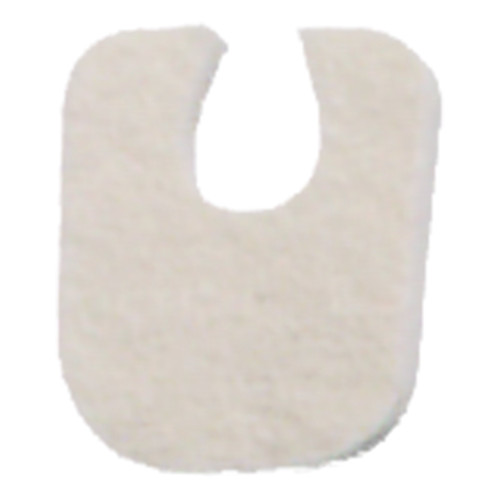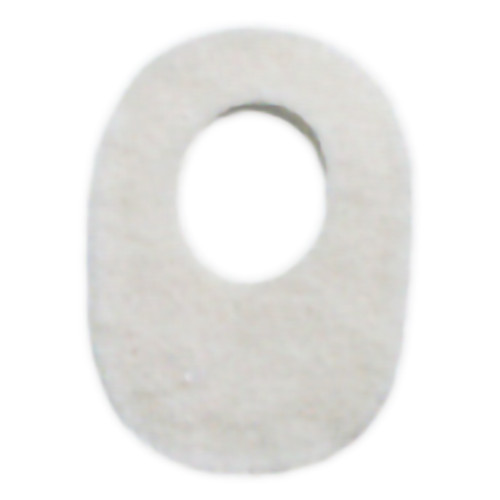-

Ossur
Ossur Mesh Top Post-Op Shoe Male
Breathable mesh upper with reinforced heel counter and padded heel collar provides increased stability overall to the rear of the foot while reducing slippageSemi-rigid sole provides superior protection and control after osteotomies Extended strap and...
As low as $17.48 -

Darco
Darco International Post-Op Shoe - Black Mesh Surgical Shoes
Has a padded collar and reinforced heel counter that provides comfort and added supportThe upper is made from soft, breathable black nylon mesh The hook and loop closure insures even compression The black TPR outsole is flared in the heel area to provide...
As low as $17.24 -
 As low as $30.27
As low as $30.27 -
 As low as $38.42
As low as $38.42 -
 As low as $18.28
As low as $18.28 -
 As low as $16.02
As low as $16.02 -
 As low as $60.46
As low as $60.46 -

Gel Toe Spreaders
Silipos Gel Toe Spreaders for Overlapping Toes and Bunions
Package Count: 4. Gel toe spreaders align and straighten toes with gentle, constant pressure. Silipos gel releases a medical grade mineral oil that lubricates the skin as it separates troubled toes. Gel will not flatten or lose its shape like foam does...
$12.40 -

3M
3M Coban LF Compression Bandage, Self-Adherent Cohesive Wrap
A self-adherent elastic wrap that functions like a tape, but sticks only to itself. Used to secure dressings and other devices; compress or protect wound sites; immobilize injuries and more.Coban self-adherent wrap is a laminate of nonwoven material and...
As low as $58.54 -

ASO
ASO Lace Up Ankle Brace with Hook and Loop - Secure Ankle Support
Speed lace closure allows easier and faster application Stabilizing straps form figure eight to protect and support ankle Elastic cuff closure enhances support from stabilizing straps Breathable nylon boot enhanced breathablility for long term wear Low...
As low as $44.42 -

Ossur
Ossur Black Soft Top Post-Op Shoe Adult Female
This Össur Women's Cast Shoe is made to fit size 7 to 8 women's shoe sizes. The cast shoe is intended for use during recovery from soft tissue procedures, post trauma and to relieve a geriatric or insensitive foot.Size medium The cotton-poly blend upper...
As low as $17.97 -

Ossur
Ossur Post-Op Shoe - Soft Top Surgical Shoe
Suitable for use while you recover after a soft tissue procedure, post trauma or to relieve an insensitive or geriatric foot, this Össur Men's Soft-Top Post-Op Shoe features a cotton-poly blend upper that promotes air circulation. The contact closure...
As low as $17.44
Braces & Supports

Braces & Supports
Braces and supports are simple, low-tech medical devices designed to be worn after an injury. Their purpose is to immobilize, partially immobilize, stabilize, realign, or support specific body parts, often to facilitate healing or relieve pain. In addition, braces and supports treat joint-related problems and work for some muscular or skeletal issues, such as during a fracture or muscle tear.What's the Difference Between a Brace and a Support?
Although many use these two terms interchangeably, braces are more rigid and should immobilize or severely limit the motion of a joint. Supports are softer and more flexible, providing stability rather than immobilization.What Conditions Are Braces and Supports Used For?
Some of the most common conditions that can benefit from supports or braces include:- Sprains and strains
- Osteoarthritis
- Carpal tunnel syndrome
- Plantar fasciitis (inflammation of the tendon in the sole)
- De Quervain's tenosynovitis (an inflammatory condition of the thumb)
- Tennis or golfer’s elbow
- Runner’s knee
- ACL or MCL injuries (injuries to the tendons in the knee)
- Meniscus tear (an injury to the cartilage within the knee)
- Herniated disks
- Tendonitis
Braces and Supports for Preventing Injury
Braces and supports can also help prevent injuries, especially for athletes and seniors. Athletes are at risk for sports-related injuries such as sprains, strains, and ligament tears. Using appropriate support can reduce the risk of new injuries and the likelihood of reinjury after recovery. Lightweight wrist supports, knee supports, leg supports, and arm supports can be beneficial for athletes who want to protect themselves without restricting their movement.Seniors are also at risk for musculoskeletal disorders, thanks in part to a lifetime of everyday wear and tear. Connective tissue weakens and loses elasticity with age, bones become more fragile, and muscles lose mass. All of this makes acute injury and repetitive use problems such as osteoarthritis more likely. When used correctly, braces and supports can help reduce the chance of injury and improve mobility for some.
Things to Keep in Mind when Shopping for Supports or Braces
When selecting the best brace or support for your needs, there are several important points to consider:Level of support.Some conditions may require only mild support, such as a compression sleeve, while others may call for moderate or rigid support. Some braces allow you to adjust the amount of support. Be sure to choose the correct level of support for your needs.
Size.To work properly, a supportive brace must fit snugly but not too tightly. Some braces and supports may be adjustable to fit different shapes and sizes of the body, while others may come in multiple sizes.
Material.The best support should be lightweight but durable. Too much weight or bulk can be cumbersome, and heavy materials can be hot and uncomfortable. Look for breathable materials and a low profile for the most comfortable experience.
